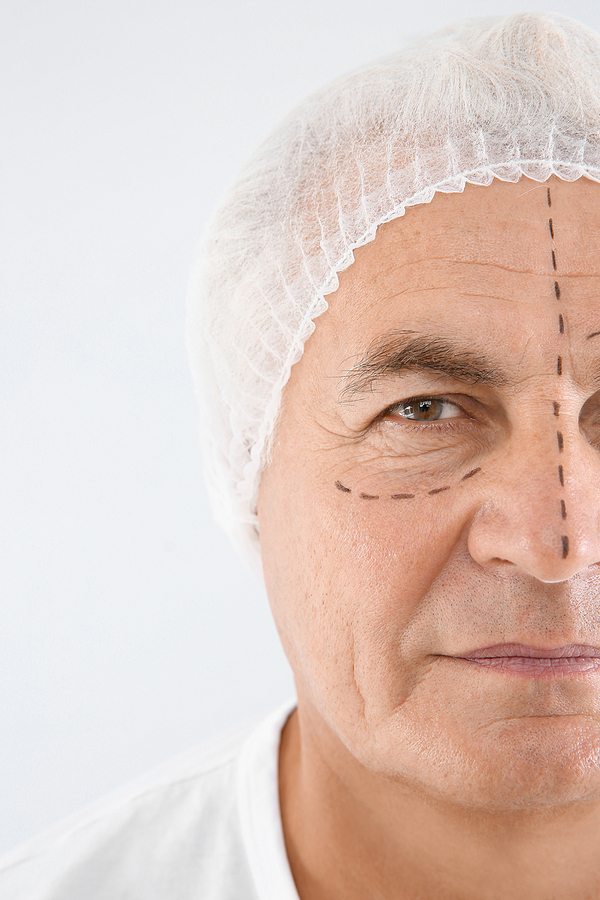 Blepharoplasty
Blepharoplasty
As we mature, the delicate skin around the eyes can appear puffy, saggy, or droopy. Eyelid skin stretches, muscles weaken, and the normal deposits of protective fat around the eye settle and become more prominent. The surgical procedure to remove excess eyelid tissues (skin, muscle, or fat) is called blepharoplasty.
Blepharoplasty can be performed on the upper eyelid, lower eyelid, or both. The surgery is performed for either cosmetic or functional reasons. Sometimes excess upper eyelid tissue obstructs the upper visual field or can weigh down the eyelid and cause the eyes to feel tired. Most often, people choose blepharoplasty to improve their appearance by making the area around their eyes firmer. When blepharoplasty is performed to improve vision rather than for cosmetic reasons only, the costs may be covered by your health insurance plan.
Blepharoplasty for the lower eyelid removes the large bags under the eyes. It is unusual for third-party payers to cover lower-lid blepharoplasty.
The surgery is usually performed on an outpatient basis and can take one to three hours. Upper-eyelid incisions are made in the natural crease of the lid, and lower-lid incisions are made just below the lash line. A procedure for lower-lid blepharoplasty, known as transconjunctival lower-lid blepharoplasty, removes or redistributes excess fat through an incision inside the lower lid. The incisions are closed with fine sutures.
Swelling, bruising, and blurry vision are common after blepharoplasty. Stitches are removed three to five days after surgery, except in the case of transconjunctival blepharoplasty, where the self-dissolving sutures require no removal.
Possible complications associated with blepharoplasty include bleeding and swelling, delayed healing, infection, drooping of the upper or lower eyelid, asymmetry, double vision, and dry eye, to name a few. It is important to note that the puffiness of the fat pockets may not return, but normal wrinkling and aging of the eye area will continue.

Botox Injections
Botox is the trade name for botulinum toxin. In its pure form, botulinum toxin is a poisonous neurotoxic protein that is found in certain spoiled foods and causes muscle weakness. It acts as a nerve impulse blocker, preventing muscles from contracting. In an extremely dilute form, botulinum toxin has many medical applications.
Botulinum toxin is used to treat ocular conditions such as blepharospasm, an excessive contraction of the eyelid muscles that forces the eyelids closed, and hemifacial spasm, an excessive contraction of the facial muscles on one side of the face. When the toxin is injected directly into the muscles of the face or the eye, it causes the overactive muscles to relax. It usually takes a few days for the therapeutic effects to be noticeable, and the injections may need to be repeated every four to six months.
Botulinum toxin also is used to treat certain kinds of double vision. The toxin is injected directly into the eye muscle opposite the paralyzed muscle.
Botulinum toxin can also be used for cosmetic purposes to soften wrinkles around the eye. It can also weaken the brow muscles in order to diminish the deep furrows or frown lines that may appear in the middle of the forehead.
Side effects of the injections are temporary. They can include a droopy upper eyelid, double vision, and being unable to close the eyelids.
Eyelid Surgery
Eyelid surgery is a common method of treatment for entropion (inward turning of the eyelid), ectropion (outward turning of the eyelid), ptosis (drooping of the eyelid), and some eyelid tumors.
Eyelid surgery is usually an outpatient procedure performed under local anesthesia. Risks of surgery are rare but can include bleeding, infection, and eyelid asymmetry due to uneven wound healing. Differences in healing between the eyes may cause some unevenness after surgery.
After eyelid surgery, bruising or a black eye is common but resolves quickly. It may be difficult to close your eyelids completely, making the eyes feel dry. This irritation generally disappears as you heal. Serious complications are rare but can include vision loss, scarring, and infection. To most people, the improvement in vision, comfort, and appearance after eyelid surgery is very gratifying.

